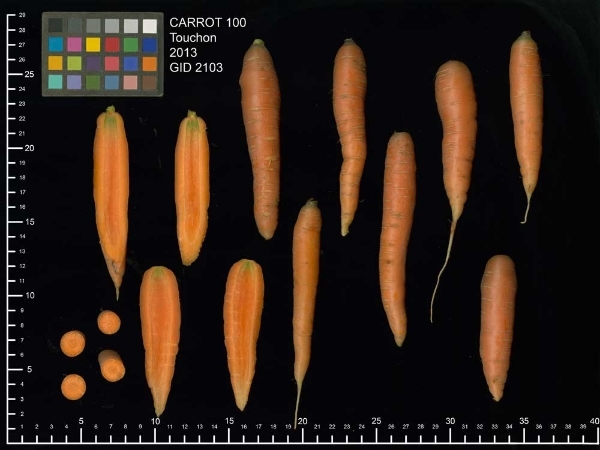40 Reasons to Save Seeds in 2015
/If you’re a fan of Seed Savers Exchange, you’ve probably heard that we’re celebrating our 40th anniversary this year. We hope you will join us in our celebrations by saving seeds. Why put in the effort? Let this list convince you.
When you save seeds, you:
SSE's conservation efforts rely on participatory preservation. When you steward biodiversity by saving and sharing seeds in your own garden, you make our work possible.
1. Increase your self-reliance.
2. Become closer to nature.
3. Become a steward of diversity. Explore the Online Seed Exchange to discover over 16,000 different varieties of fruits, vegetables, fruits, herbs, and flowers. Many of these unique plants only exist in the hands of one or two gardeners. Lend a hand and save some of those seeds that are in danger of disappearing!
4. Save money on seeds.
5. Spread knowledge.
6. Connect with a place.
7. Establish ties to history.
8. Deepen connections to your family. Many of the seeds we keep at Heritage Farm are steeped in family history, having been shared from generation to generation. Last year, we grew the ‘Old Timey Blue’ collard green in one of our display gardens. Like the 'Willis' collard green, ‘Old Timey Blue’ has a long history of being grown in the same family. Try out one of these family heirlooms or start your own tradition!
'Willis' Collard Green
9. Take control of your food.
10. Feel a connection to the land.
11. Appreciate the change of the seasons.
12. Participate in a community. Become a part of a community seed library, a local garden club, or join our Community Seed Resource Program (CSRP). Members of the CSRP receive a toolkit of seed saving supplies and they are welcomed into Seed Savers Exchange as members. Check out the CSRP website for more information!
13. Adapt varieties to your local climate.
14. Explore food history.
15. Create gifts for others! Package up those flower seeds and give them away as presents! Aromatic herb seeds like dill and fennel make excellent gifts that friends can plant or use for cooking.
16. Give power to local food systems.
17. Have the ability to breed your own varieties.
18. Reclaim the commons. Saving open-pollinated seeds allows you to participate in a centuries-long tradition of free exchange of genetic resources. Read more about how gardeners can learn a thing or two from open source software designers in the article "Linux for Lettuce" and on the Open Source Seed Initiative's website.
19. Adopt new perspectives.
Insect pollinators play an important role in the seed garden
20. Help protect and preserve pollinators. Before you pull all of your young radishes out of the ground, consider leaving a few plants in the dirt to mature into flowering plants. Pollinators go wild for long-lived radish flowers. The insects will repay your kindness by pollinating your plants, allowing you to harvest a large crop of seeds come fall.
21. Learn to take care of something.
22. Inspire wonder.
23. Prompt questions.
24. Think creatively. How will you prevent two varieties of squash from cross-pollinating? How will you protect your carrot crop from crossing with Queen Anne’s Lace? Invent a fun game to play with kids that teaches them how to hand-pollinate squash! Sew your own isolation cages! The garden gate opens the door to creativity.
25. Make connections.
26. Feed your friends. Save seed from your corn crop and grind those kernels into flour! You can whip up some grits, cornbread, or tortillas and impress your friends with your home-grown pantry.
27. Show off your gardening skills!
28. Experience bounty. Saving seeds leads you into a world of other passionate gardeners and a whole universe of diverse crops. Explore events like our annual Tomato Tasting to see this bounty for yourself!
Thoughtful judges evaluate tomatoes at SSE's 2014 Tomato Tasting
29. Create memories.
30. Appreciate the beauty of plants’ life cycles.
31. Share stories.
32. Develop a sense of scale. One bean seed can yield dozens of seeds for next year’s garden, but one amaranth seed can yield tens of thousands of seeds. Check out The Seed Garden: The Art and Practice of Seed Saving for specific information about the recommended population size for seed saving on any scale.
33. Appreciate the resilience of nature.
34. Cook with new ingredients! Find a recipe for pickled nasturtium buds, learn to love the taste of basil flowers, and sprinkle poppy seeds in all of your summer desserts.
35. Learn to handle adversity. If you lose part of your pepper crop to frost, don’t despair! You’re now selecting for frost resistance!
Sweet pea flowers bring color to a HEritage Farm Display Garden
36. Participate in an ancient tradition.
37. Take ownership.
38. Get outside.
39. Try something new.
40. Preserve biodiversity. There is inherent value in all of the seeds we work to protect. Some of the plants we preserve have a strong cultural history, others possess unique culinary properties, and others display resilience to climatic events or invasive pests. It's up to all of us to lend a hand by saving and sharing seeds.
Whether it’s for the planet, for local pollinators, for your community or for yourself, think about incorporating seed saving into your gardening plants for the season. Let us know if you dream up any other reasons to save seeds! We’d love to hear from you. Until then, happy seed saving.
Seed Savers Exchange is a non-profit organization located in Decorah, Iowa, with a mission to conserve and promote America's culturally diverse but endangered garden and food crop heritage for future generations by collecting, growing, and sharing heirloom seeds and plants.














